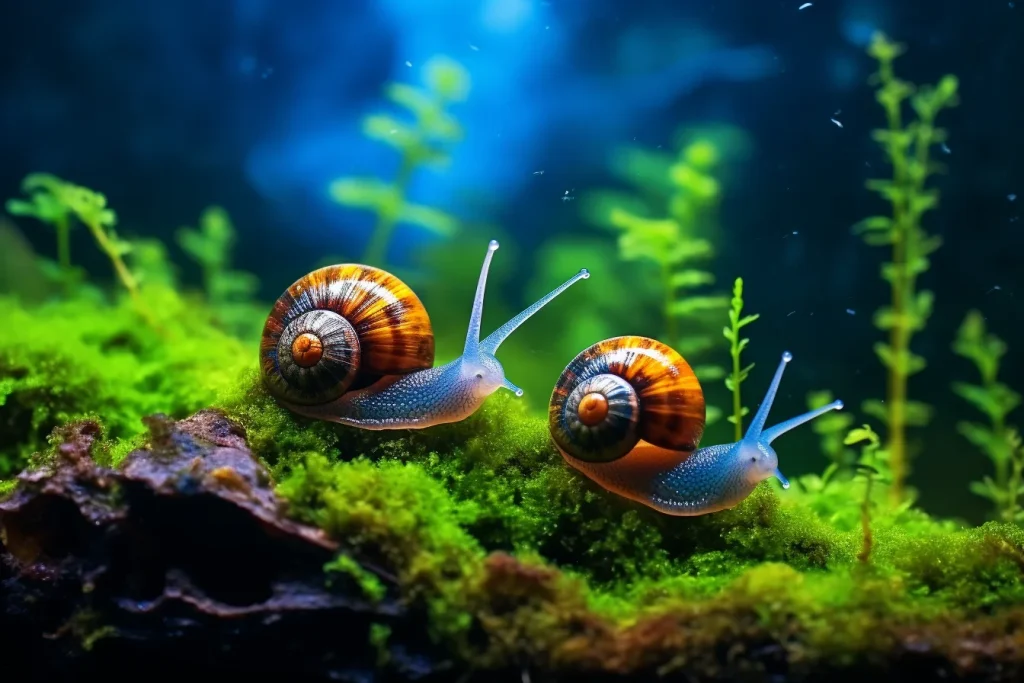Aquarium snails are common in home aquariums, often hitchhiking on live plants or introduced accidentally through other means. While they play an important role in algae control and breaking down waste, aquarium snails can quickly multiply out of control if left unchecked. When facing a snail population explosion, disposal becomes necessary.
This comprehensive guide will discuss responsible methods for removing snails from your tank and properly disposing of them. With some strategic steps, you can eliminate nuisance snails and reset balance in your aquarium.
Preventing Snail Introductions
Prevention starts by carefully inspecting anything entering your tank, including new plants, decorations, substrates, and fish. Check thoroughly for any visible snails or eggs during a 2-3 week quarantine period. Additionally:
- Inspect live plants – Examine leaves top and bottom for egg clutches that resemble clear gelatinous blobs. Remove and discard any snails, eggs, and infected parts of plants. Dip plants in diluted bleach, saltwater, or potassium permanganate to kill snail life stages.
- Disinfect decor – Scrub decorations with hot water to remove snail eggs. Alternatively, spray or soak decor in vinegar for 1 hour before rinsing.
- Quarantine new fish – Observe fish for signs of carrying snail eggs or larvae. Treat tank with copper medications if found.
Proper identification of snail species can also help assess risk, as some species reproduce less prolifically. Taking preventative measures is essential to avoiding major snail infestations down the road.
Reducing Existing Snail Populations
If snails have already infiltrated your tank, reducing their food sources and habitat can help slow population growth:
- Feed responsibly – Don’t overfeed fish. Uneaten food fuels snail reproduction. Feed only what fish can eat in 3-5 minutes 1-2 times daily.
- Clean tank surfaces – Wipe down tank walls, siphon gravel, remove dead leaves, and scrape algae during water changes. This removes snail food sources and eggs.
- Reducing numbers this way takes diligence, but avoids risks associated with chemical controls. For more aggressive reductions, removal methods become necessary.
Removing Aquarium Snails
To fully eradicate a snail colony, manual and chemical removal methods prove most effective:
Manual Removal
- Bait traps – Place vegetable slices like zucchini or cucumber overnight in the tank to attract snails. Remove in the morning along with all gathered snails.
- Target egg clutches – Identify and scrape off any gelatinous egg clusters attached to tank surfaces and decor.
- Squish visible snails – Crush larger snails that can be seen on surfaces. Use gloves or tweezers to avoid cutting hands on sharp shells.
- Deep clean tank and decor – Take everything out of the tank. Scrub surfaces and decor thoroughly to dislodge all snails and eggs for removal.
While labor intensive, manual removal temporarily reduces numbers alongside other eradication efforts.
Chemical Removal
For more thorough snail extermination, chemical treatments prove fast and effective:
- Copper supplements – Copper sulfate, chloride salts kill invertebrates like snails but do not harm fish at recommended levels. Use as directed to eliminate snails.
- Potassium permanganate dips – Submerging plants in potassium permanganate solution kills all snail life stages while preserving most plants. Rinse thoroughly before replanting.
- Bleach or vinegar dips – Alternatively, use diluted bleach or vinegar solutions to dip decor and non-porous surfaces, eliminating any potential snail eggs. Rinse well afterwards.
When using chemicals, extreme care must be taken regarding concentration and exposure times to avoid harming fish and plants. Combining chemical measures with manual removal provides the best chance of complete resolution.
Aquarium Snail Disposal
Once removed from the tank, proper snail disposal techniques prevent future spread:
- Freeze snails – Place snails in sealed bags or containers before freezing for at least 72 hours to humanely euthanize them.
- Boil snails – Drop snails into boiling water for 2-3 minutes to kill them.
- Seal and discard – Secure dead snails in plastic bags marked “dead animals” before placing in household trash bins for removal by waste management services.
- Incinerate snails – Bring dead snails to veterinary clinics or hazard control companies that safely incinerate medical and biohazardous waste containing animal remains.
Releasing live aquarium snails into natural ecosystems poses an environmental threat. Instead, use humane disposal methods that prevent further propagation.
Preventing Future Snail Outbreaks
With snails eliminated, taking preventative steps reduces recurrence:
- Maintain optimal aquarium conditions without overfeeding or fluctuating water parameters.
- Carefully inspect new plants, fish, decorations, substrates and quarantine when necessary.
- Periodically thin dense plant growth and clean tank surfaces to remove biofilms snails consume.
- Refrain from moving plants, decorations or equipment from infested tanks without disinfecting first.
Staying vigilant keeps new snail introductions and population booms at bay. Combining preventative measures with manual and chemical removal provides the best chance at long term snail-free aquarium success.
Summary of Aquarium Snail Disposal Best Practices
- Inspect and quarantine new tank inhabitants and decor before adding.
- Reduce snail food sources by removing algae, debris and responsibly feeding fish.
- Trap, crush, and deep clean out existing snails through manual removal.
- Use copper chemicals cautiously alongside manual efforts for complete extermination.
- Dispose of dead snails humanely through freezing, boiling or incineration methods. Never release snails into natural ecosystems.
- Going forward, continue inspecting, cleaning and maintaining optimal tank conditions to prevent recurring infestations.
Employing dedicated snail control measures reduces chances of primers triggering future outbreaks. With a strict prevention and disposal regimen, aquarists can successfully manage snail populations, protecting the balance of their aquatic environment.



